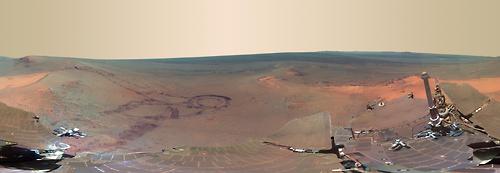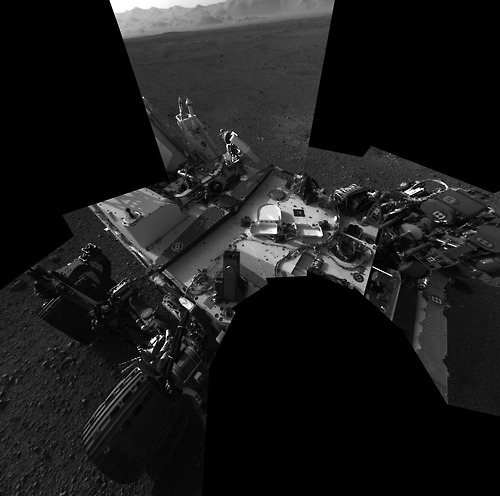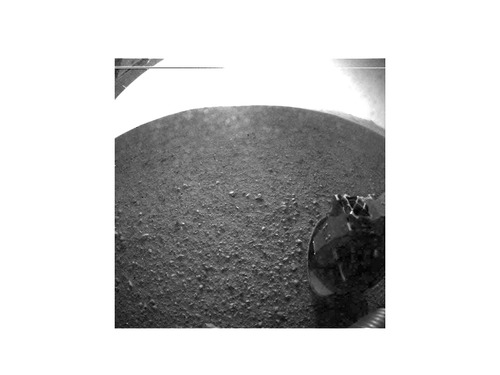Challenges of Getting to Mars: Curiosity’s Seven Minutes of Terror
Video description
Team members at NASA’s Jet Propulsion Laboratory share the challenges of the Curiosity Mars rover’s final minutes to landing on the surface of Mars. Curiosity is scheduled to land on August 5.
You can follow Curiosity’s journey on Twitter or Facebook. Learn more about the mission.
Video transcript
Music
Adam Steltzner: When people look at it… uhhh, it looks crazy. That’s a very natural thing.
Sometimes when we look at it, it looks crazy.
It is the result of reasoned, engineering thought.
But it still looks crazy.
From the top of the atmosphere, down to the surface-
It takes us seven minutes.
It takes 14 minutes or so for the signal from the spacecraft to make it to Earth- that’s how far Mars is away from us.
So, when we first get word that we’ve touched the top of the atmosphere, the vehicle has been alive… or dead, on the surface, for at least seven minutes.
(music crescendos- dark pounding drums)
Tom Rivellini: Entry, descent and landing, also known as EDL, is referred to as the ‘7 minutes of terror’. Because we’ve got literally seven minutes to get from the top of the atmosphere to the surface of Mars- going from 13,000 miles an hour to zero, in perfect sequence, perfect choreography, perfect timing… and the computer has to do it all by itself, with no help from the ground
If any one thing doesn’t work just right, it’s game over.
(whoosh)
(music -tension/drums steadily building)
Adam Steltzner: We slam into the atmosphere and develop so much aerodynamic drag, our heat shield, it heats up and it glows like the surface of the sun.
1600 degrees!
Miguel San Martin: During entry, the vehicle is not only slowing down- violently, though the atmosphere, but also we are guiding it, like an airplane to be able to land in a very narrow, constrained space.
This is one of the biggest challenges that we are facing, and one that we have never attempted at Mars.
Tom Rivellini: Mars- it’s actually really hard to slow down, because it has just enough atmosphere, that you have to deal with it- otherwise, it will destroy your spacecraft.
On the other hand, it doesnt have enoughatmosphere to finish the job. We’re still going about 1000 miles an hour.’
So at that point we use a parachute.
Anita Sengupta: The parachute is the largest and strongest super-sonic parachute- that we’ve ever built to date.
It has to withstand 65,000 pounds of force! even though the parachute itself only weighs about 100 pounds.
(blast-whoosh)
Tom Rivellini: When it opens up that fast, it’s a neck-snapping 9G’s!
Steve Lee: At that point we have to get that heat shield off. It’s like a big lens cap, blocking our view of the ground to the radar.
The radar has to take just the right altitude and velocity measurements at just the right time- or the rest of the landing sequence wont work.
(heavy wind sound)
(music pulsing/intense)
Tom Rivellini: This big huge parachute that we’ve got- it’ll only slow us down to about 200 miles an hour.
And that’s not slow enough to land.
So we have no choice but we’ve got to cut it off!
(whoosh)
(music cuts)
And then come down on rockets.
(engines blast)
Once we turn those rocket motors on- if we dont do something, we’re just going to smack right back into the parachute!
(engines blast) (
music- big pounding drums)
So the first thing we do is make this really radical ‘divert maneuver’
‘We fly off to the side.
Adam Steltzner: Diverting away from the parachute, killing our horizontal velocity and our vertical velocity getting the rover moving straight up and down, so it can look at the surface with its radar- and see where we’re gonna land.
And we head straight down to the bottom of a crater right beside a six kilometer-high mountain!
(music- grand)
Anita Sengupta: We can’t get those rocket engines too close to the ground. Because if we were to descent propulsively all the way to the ground- we would essentially create this massive dust cloud. That dust cloud could then land on the rover-
It could damage mechanisms and it could damage instruments.
So the way we solve that problem, is by using the skycrane maneuver.
Adam Steltzner: 20 meters above the surface, we have to lower the rover below us- on a tether that’s 21 feet long. And then deposit it, on its wheels, on the surface.
(music- intense and climactic)
Miguel San Martin: As the rover touches down and is now on the ground, the descent stage- it’s on a collision course with the rover!
We must cut the bridal immediately and fly the descent stage to a safe distance from the rover.
(music crescendos and ends)
(thunderous rockets echo)
(music-final orchestra hit over dark drone)
(wind in background)
(music- dark drone continues with faint ticking sound)
NASA Jet Propulsion Laboratory, California Institute of Technology




